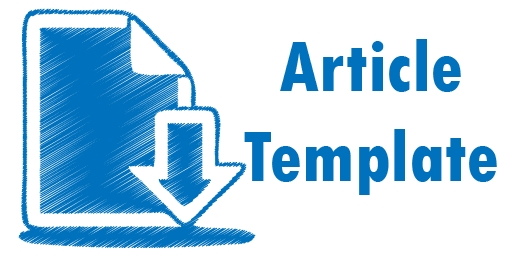Design of a Project-Based Learning Guide based on Chemical Literacy with the Theme of Bio Battery for Class XII Senior High School Students
Abstract
This study aims to produce a project-based learning guide design based on chemical literacy with the theme "bio-battery" that can be used to improve student literacy and help students understand chemical concepts, especially voltaic cell material. This guide is designed in accordance with the anatomy of the project based learning model according to Michael Grant (2002) which includes aspects of chemical literacy according to Yael Schwartz (2006)..The content and construct validity tests were carried out by five validators (expert judgments) and will be analyzed using the Aiken's V formula. The results of data analysis in this study showed the Aikens' V value for content validity was 0,91 and construct validity was 0,92. Thus, it can be concluded that the technical guide for Project based learning based on chemical literacy is valid in terms of content and context.References
Aiken, L. R. 1985. Three Coefficients for Analyzing the Reliability and Validity of Ratings. Educational and Psychological Measurement, 45, 131-142.
Depdiknas.2006. Kompetensi Dasar Mata Pelajaran Kimia untuk SMA dan MA. Jakarta: Puskur Balitbang:
Desimah, D., Rafiuddin, R., & Dali, A. 2019.Penerapan Model Pembelajaran Project Based Learninguntuk Meningkatkan Literasi Sains Kimia Siswa Kelas XI pada Materi Pokok Koloid.Jurnal Pendidikan Kimia FKIP Universitas Halu Oleo, 4(3), 190-200.
Dewi, P. A. 2021. Berliterasi Sejak Dini untuk Menghadapi Asesmen Kompetensi Minimum.Warta Pendidikan| e-Journal, 5(5).
Fani, I. T., Fadiawati, N., & Tania, L. (2016).E-book interaktif pada materi elektrokimia berbasis fenomena kehidupan sehari-hari. Jurnal Pendidikan dan Pembelajaran Kimia, 5(2), 334-346.
Grant, M. M. 2002. Getting A Grip on Project-Based Learning: Theory, Cases And Recommendations. Meridian: A middle school computer technologies journal, 5(1), 83.
Simanjuntak, M. P., Bukit, N., Sagala, Y. D. A., Putri, R. K., Utami, Z. L., & Motlan, M. 2019. Desain Pembelajaran Berbasis Proyek Terhadap 4C. INPAFI (Inovasi Pembelajaran Fisika), 7(3).
Hardjo Nuryati, D.W., Masitoh, S. and Arianto, F., 2020.Pengaruh Project Based LearningTerhadap Kreativitas Peserta Didik di Masa Pandemi.Educate: Jurnal Teknologi Pendidikan, 5(2), pp.98-106.
Juntunen, M. and Aksela, M., 2013.Life-cycle thinking in inquiry-based sustainability education–effects on students’ attitudes towards chemistry and environmental literacy.Center for Educational Policy Studies Journal, 3(2), pp.157-180.
Lailatunnahar, T., 2021.Penerapan Metode Pembelajaran Project Based LearningGuna Meningkatkan Hasil Belajar IPA di Masa Pandemi Covid 19 pada Siswa Kelas VII.1 di SMP Negeri Binaan Khusus Kota Dumai.Jurnal Pendidikan Tambusai, 5(1), pp.1084-1094.
Mulyono, H., & Agustin, E. E. 2020.Pengaruh Model Pembelajaran Project Based LearningTerhadap Hasil Belajar Siswa pada Mata Pelajaran Pemrograman Dasar di SMK Muhammadiyah 1 Padang. JIPI (Jurnal Ilmiah Penelitian dan Pembelajaran Informatika), 5(1), 20-24.
Nisa, A. R. K. 2021. Efektivitas Model Pembelajaran Berbasis Proyek dalam PJJ Terhadap Pemahaman Materi.Alinea: Jurnal Bahasa, Sastra, dan Pengajaran, 10(1), 61-66.
Nurfitriyanti, M. 2016. Model Pembelajaran Project Based LearningTerhadap Kemampuan Pemecahan Masalah Matematika. Jurnal Formatif 6(2): 149-160.
Ortega-Sánchez, D., Cal, E. S. D. L., & Quintana, J. I. 2019.Literacies and the Development of Social, Critical, and Creative Thought in Textbook Activities for Primary Education in Social Sciences and the Spanish Language.Frontiers in psychology, 10, 2572.
Pratama, H., & Prasetyaningrum, I. 2016. Pengaruh Model Pembelajaran Project Based LearningBerbantuan Media Pembelajaran Pembangkit Listrik Tenaga Mikrohidro Terhadap Kemampuan Berpikir Kritis. Jurnal Penelitian Fisika Dan Aplikasinya (JPFA), 6(2), 44-50.
Plomp, T. et. al. 2007.An Introduction to Educational Research.National Institute for Curriculum Development.
Rokhim, D. A., Widarti, H. R., & Fajaroh, F. 2020. Pengembangan Bahan Belajar Flipbook Pada Materi Redoks dan Elektrokimia Berbasis Pendekatan STEM-PjBL Berbantuan Video Pembelajaran.Jurnal Teknologi Pendidikan, 8, 02.
Sari, D. N. A., Rusilowati, A., & Sukowati, M. 2017.Pengaruh pembelajaran berbasis proyek terhadap kemampuan literasi sains siswa.PSEJ (Pancasakti Science Education Journal), 2(2), 114-124.
Schwartz, Y., Ben‐Zvi, R., & Hofstein, A. 2005.The importance of involving high‐school chemistry teachers in the process of defining the operational meaning of ‘chemical literacy’.International Journal of Science Education, 27(3), 323-344.
Schwartz, Y., Ben-Zvi, R., & Hofstein, A. 2006. The Use Of Scientific Literacy Taxonomy for Assessing The Development of Chemical Literacy Among High-School Students. Chemistry Education Research and Practice, 7(4), 203-225.
Simanjuntak, M. P., Bukit, N., Sagala, Y. D. A., Putri, R. K., Utami, Z. L., & Motlan, M. 2019. Desain Pembelajaran Berbasis Proyek Terhadap 4C. INPAFI (Inovasi Pembelajaran Fisika), 7(3).
Yuliana, C. 2020. Project Based Learning, Model Pembelajaran Bermakna Di Masa Pandemi Covid 19. Accessed on http://lpmplampung.kemdikbud. go. id/po-content/uploads/PjBL-edit_cecil_052020. pdf.
Copyright toward articles published by Entalpi Pendidikan Kimia is hold by Entalpi Pendidikan Kimia. In the other side, Entalpi Pendidikan Kimia also applied CC Attribution 4.0 which means you could 1) share — copy and redistribute the material in any medium or format; and 2) adapt — remix, transform, and build upon the material; for any purpose, even commercially. As long as you give us attribution — You must give appropriate credit, provide a link to the license, and indicate if changes were made. You may do so in any reasonable manner, but not in any way that suggests the licensor endorses you or your use. Entalpi Pendidikan Kimia also applied Open Access toward each published articles, so the published content will be available freely for public.





